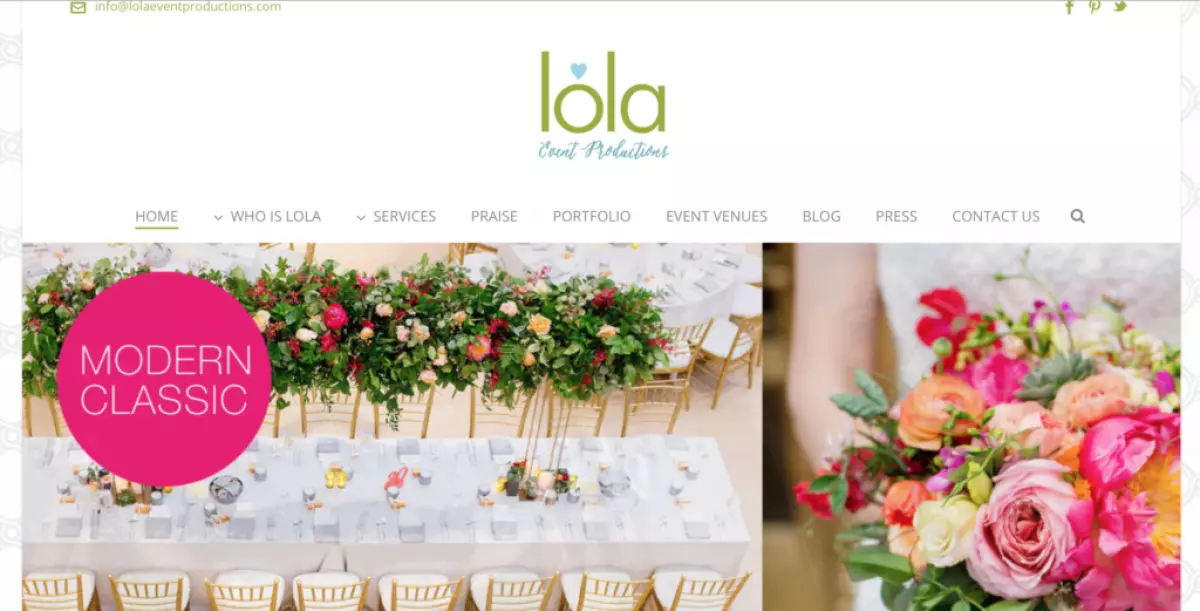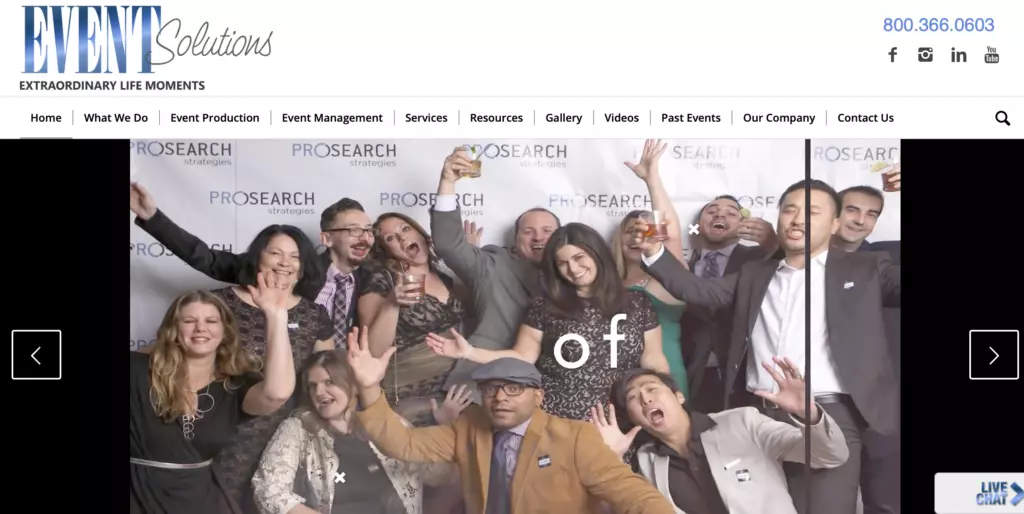Welcome to this article on creating an unforgettable event portfolio. Building an event portfolio is unanimously regarded by experts as the most important thing you will do to promote yourself to your target clients. An online event portfolio will showcase to the world who you are, what you do, and whether you truly have talent.
In this guide, we will take you through the basics of creating an event portfolio, especially when preparing for an interview at a new company. Don't worry, we will walk you through the fundamentals and answer your burning questions.
Understanding the Definition and Purpose of an Event Portfolio
An event portfolio is commonly found online and represents the work of an individual or an event management company. It showcases the successes that the individual or team has achieved in event organization. From event photos to testimonials, an event portfolio aims to demonstrate your event organizing abilities in the best way possible. Whether it's a business event portfolio or a wedding and other event portfolio, their purpose is to build trust and affirm the viewer. Ultimately, it is a powerful tool to attract new clients.
What Does an Event Portfolio Look Like?
A well-designed event portfolio will show who you are and clearly explain the work you do. It will build trust with your target clients. A good event portfolio will have a beautiful design, showcasing past event experiences, education, and awards. As long as your event portfolio includes these elements, there are no strict rules on how you present them. However, like any good website, your portfolio should be easy to read and navigate.
We have gathered some examples of event portfolios to inspire your own design:
 Image: Lola event productions website
Image: Lola event productions website
1. Lola Event Productions
Lola Event Productions is an event management team based in Chicago. With over 50 years of combined experience in wedding and private event planning, they have built a strong event portfolio.
We love:
- An easy-to-understand navigation bar on the Lola Event Productions homepage.
- Eye-catching images displaying their latest awards and notable mentions from reputable industry bodies.
 Image: Colin Cowie Lifestyle website
Image: Colin Cowie Lifestyle website
2. Colin Cowie Lifestyle
Colin Cowie Lifestyle is an event management company that creates private weddings and parties for the wealthy and/or famous. Therefore, for their testimonials, they have gone above and beyond. However, their online event portfolio has other aspects that make it truly stand out.
We love:
- As Colin Cowie Lifestyle specializes in luxury events, it is crucial that their event portfolio reflects the upscale ambiance. They achieve this by including elements such as a prominent Instagram grid (displaying a collection of stunning event photos) and one-line customer quotes to encourage the brand's simple yet elegant sophistication.
 Image: Event Solutions website
Image: Event Solutions website
3. Event Solutions
Company parties and corporate events are the main focus of Event Solutions. Aside from the great website design, this event portfolio example makes it easy for potential clients to consider their large event budget allocation for Event Solutions' services.
We love:
- Event Solutions understands that "seeing is believing." So, in addition to sharing their event photos, they also feature event videos on their event portfolio website. And in case there is any ambiguity from their impressive event examples, Event Solutions also narrates why you should choose them through a bullet point list of their unique selling points.
Now that you know how to evaluate other event portfolios, it's time to create your own! Here's what you need to build it and make it truly unique.
Understanding the Basics of an Online Event Portfolio
Content is the most crucial component of any portfolio in the event industry or any other profession. Once you have all the elements, you can start experimenting with ways to differentiate yourself from your competitors. But at a minimum, your event portfolio should include the following sections:
10 Must-Have Sections in an Event Portfolio
One of the best ways to start an event planning career is to have experience in any way you can. But what good is experience if you don't let the world know you have it? Besides showcasing your talent, you also need to ensure that your event portfolio looks good, functions well, and includes some practical business elements. Follow this checklist, and you won't have any difficulty.
1. Logo, Brand Colors, and Slogan
Just like your other marketing materials, your event portfolio should align with your company's regular branding. Most event portfolios will include a logo at the top of the website and incorporate 2-3 main brand colors throughout each page.
2. Client Testimonials
Ask the people you have organized events for to share some praise. You can also ask them to share quotes along with their names and event details. If your resume is still limited, consider asking people you have worked with, college professors, or anyone you have volunteered with to vouch for other important event organizing skills (such as work ethics, creativity, etc.).
3. Before and After Event Photos
The actual event day is very busy. However, capturing these photos and sharing them on your event portfolio is crucial because it helps "recreate" your personal profile. Showcase the overall event design and make sure to capture close-ups of details like centerpieces. And if permitted by the client, capture some candid shots of attendees enjoying the party.
4. Event Setup Process Videos
The event design is the most visually impressive aspect of the event planning process. As mentioned in the previous examples, using videos on your portfolio website is great for attracting website visitors.
5. Awards and Certifications
Most professional accolades will send or provide access to their official digital icons, seals, or logos to display on your digital assets. Place them at the top of the homepage and make sure they have more detailed descriptions or place them in other prominent positions on the website where you can explain why you won the award or specify the award.
6. About You or Meet Your Team Section
This is where you can highlight some interesting information about yourself and your team. Use professional photos of yourself. And be sure to write an introduction piece focusing on your strengths as an event organizer (such as having family members involved in the event industry or how your interest in visual arts has become your profession).
7. Social Media Links
If you have them, make sure they are displayed on your portfolio website. Or if you're creating a print portfolio, add your social media handles to the last page along with your contact information. And check all your accounts to ensure that your posts and photos are still consistent with your brand (and your new portfolio).
8. Press Mentions or Media Features
Whether you have PR help or you're getting some positive reviews on Yelp, make sure you confidently display these reputable indicators. Link to the original articles if possible.
Although not mandatory, the final two sections are worth mentioning, and by including them in your event portfolio, you'll surely earn a gold star.
9. Draft Timeline
A good idea is to allow potential customers or employers to preview what they can expect when working with you. You can even plan a mock event to use as a sample. This way, below are some tips on event timelines you can experiment with.
10. Inspirational Event Mood Board
Whether it's on Pinterest or a physical mood board, sharing your event mood board is a great way to let viewers know how you think. They can also see any recurring themes in your work or see your diverse style from one project to another.
Now that you have all the materials, what do you use to actually create the portfolio? We're glad you asked.
Explore Useful Event Portfolio Tools
There are plenty of valuable tools out there no matter how you plan to create or share your event portfolio. Below are some tools that we suggest using:
-
A Binder or Album: The debate between print and digital portfolios is still ongoing in all industries, but it's best to have at least one digital image and one traditional image, even just to make sure you have everything you need. Use a high-quality binder or album to assemble your materials. Be creative but keep it professional – too much glitter or construction paper cuts can be off-putting to clients.
-
Website Builders & Templates: Websites like Wix and Squarespace make it easy for you to create your own event portfolio website without any programming experience. Specifically, Wix provides some great event and portfolio templates you can use for free.
-
Social Tables: One of the best things you can display on your event portfolio is real statistics that confirm you set event goals and achieved them. Using event management software can help you track progress, calculate ROI, and provide specific talking points to make your event portfolio truly outstanding.
By using all the information we've covered so far, you now have a pretty good foundation for your event portfolio. But we know you want to take it a step further and create something truly unique, so here are some suggestions to do just that.
Make Your Event Portfolio Stand Out
One of the best ways to make your event portfolio stand out is to customize it for each new client. Choose the most relevant materials for the brand, event goals, and personal preferences of the client. This can be challenging to do with your online portfolio, but the good news is you can change your physical portfolio without having to create an entirely new version.
If you want to differentiate yourself within the content itself, consider looking at other local event planners and browsing through their online portfolios. If you notice a pattern (such as exact fonts or similar layouts), try to differentiate in an eye-catching and useful way. When potential clients search for you and your competitors online, what event portfolio elements will they find on your website that aren't on your competitor's? These differences will help make your portfolio more memorable.
Managing and Planning Your Event Portfolio
In reality, you can land a client without an event portfolio. But if you have any experience or education in event organizing, creating a portfolio will open up more opportunities for you. If you want to learn more business tips for event planning, check out the following guides while you're here:
- Getting Started in Event Planning? Do these First.
- 20+ Secrets to an Event Management Website
- How to Succeed with Lead Generation for your Event Management Business
With these resources and the information provided in this article, you have everything you need to create an exceptional event portfolio. Now it's time to showcase your talent, attract your dream clients, and take your event planning career to new heights. Good luck!

















